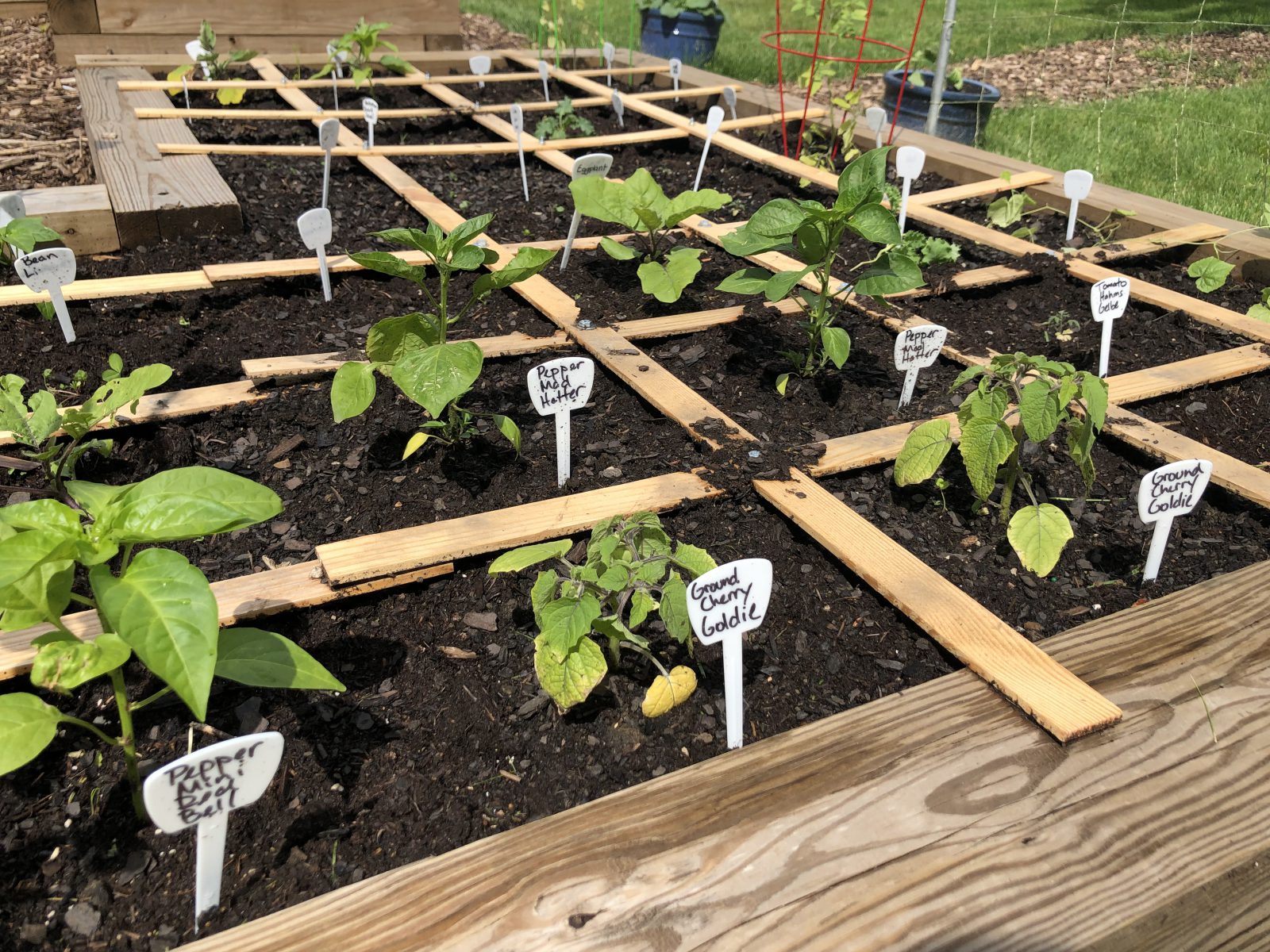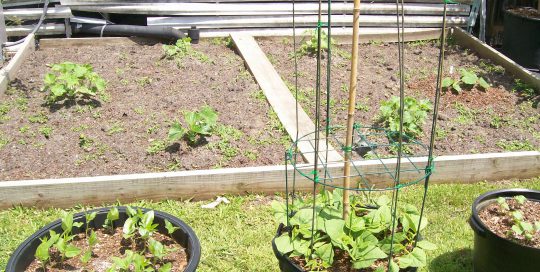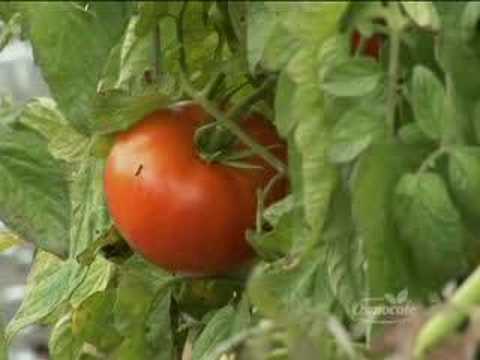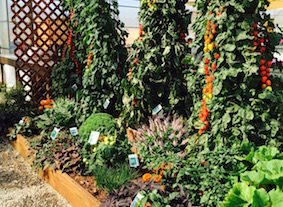Use raised bed when gardening by the square foot garden
Strangely, perhaps, my favorite aspect the square foot method has turned out to be the use of a raised bed. I had no idea how much this would simplify my life! The beds look appealing in the landscape because they add visual interest. They also impose some limits on the size of my veggie patch, which is a discipline I need. It also eliminates the feeling that I can’t keep up. Tasks like weeding and watering are focused and doable.
Gardening by the square foot starts with the quality of the soil
Let’s face it, the average backyard does not necessarily have dirt that is well-suited to growing robust flowers and vegetables. Properly conditioning your soil across your entire yard will take time, and the work and expense involved is often prohibitive for beginning gardeners. Using the square foot gardening method reduces the scope of the soil improvement task. It also eliminates the need for a soil test since the contents of the raised bed will become the growing media for your garden.
Many of us in the Midwest have a yard filled with heavy clay soil. Raised beds allow us to tinker with the soil mixture until we get it just right. For growing vegetables and flowers, a combination of 1/3 peat moss, 1/3 vermiculite, and 1/3 organic compost works like a charm. The light fluffy texture from the peat moss and vermiculite ensures good drainage, and the compost provides plants with a hefty dose of nutrients and minerals essential for healthy growth. Since a depth of six inches is a good rule of thumb for boxes, creating your perfect soil mix won’t break the bank. Long-term, I recommend amending the soil in the raised bed annually.
Construct a basic ‘box’ for the square foot garden
Square foot gardens need a basic box. I prefer a manageable size such as 4’ x 4’ (or even 3’ x 3’). I prefer to construct the box with untreated lumber for the sides, or even bricks or stones. Of course, you can get creative with sizes and shapes depending on your space. What ever you decide, I recommend keeping things small. That way, you’ll be able to reach into the center to tend plants without your footsteps compacting the soil. Boxes should be bottomless – but I suggest they be lined with landscape fabric to keep out grass and weeds.
Laying out the grid when gardening by the square foot
Once you’ve assembled your bed and filled it with soil, you’ll want to lay out your grid. Don’t skip this step! It will help you visualize where to place each of your plants, and breaks the garden down into manageable bite-sized chunks. Strips of wood, PVC piping, or even string or twine can all serve to create grids. If you create a 4 ‘x 4’ bed, you’ll have sixteen individual square foot spaces to plant in. And when one square is harvested, you can add a little more compost and replant it with something completely different without disturbing any of your other plants!






-540x272.jpg)



